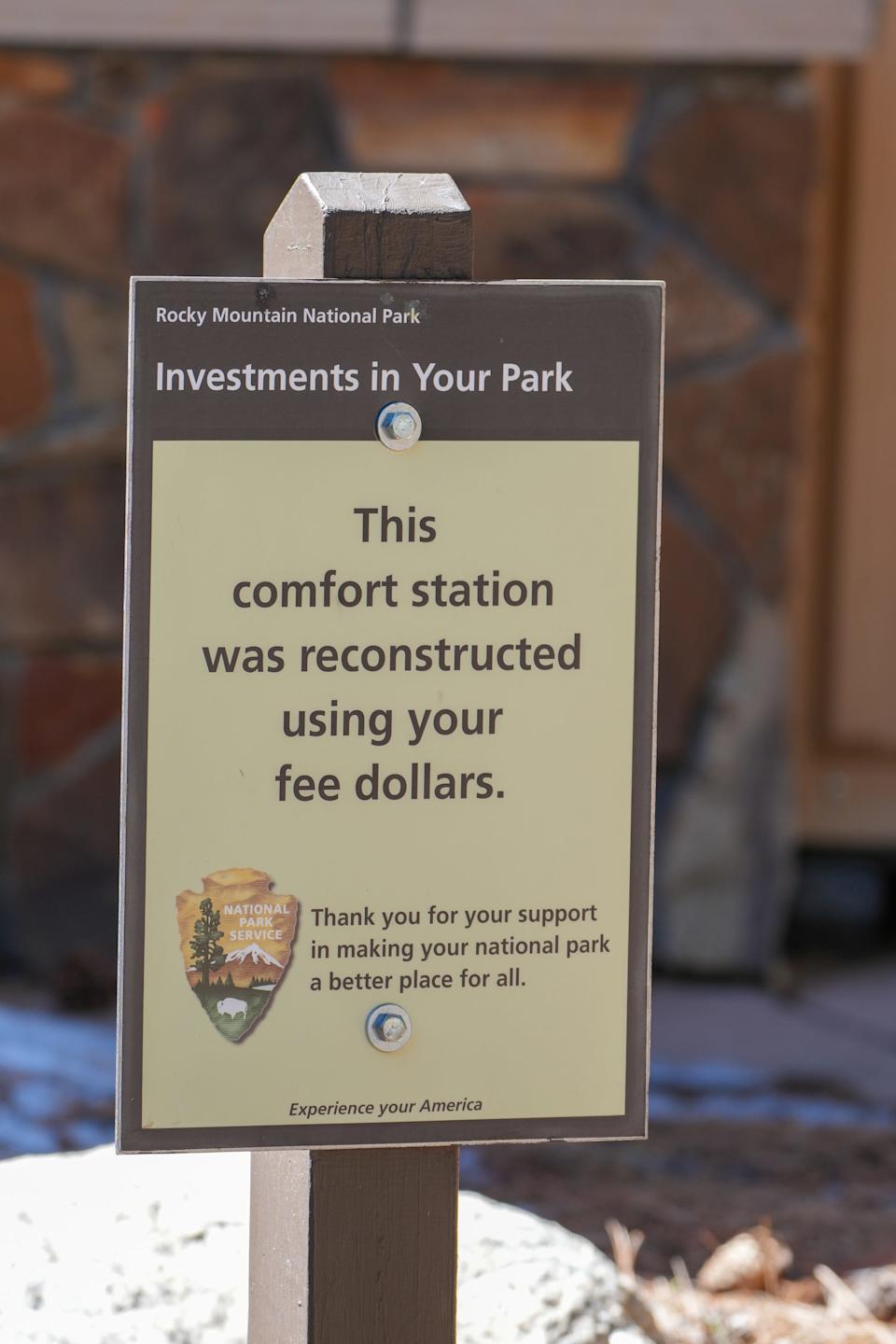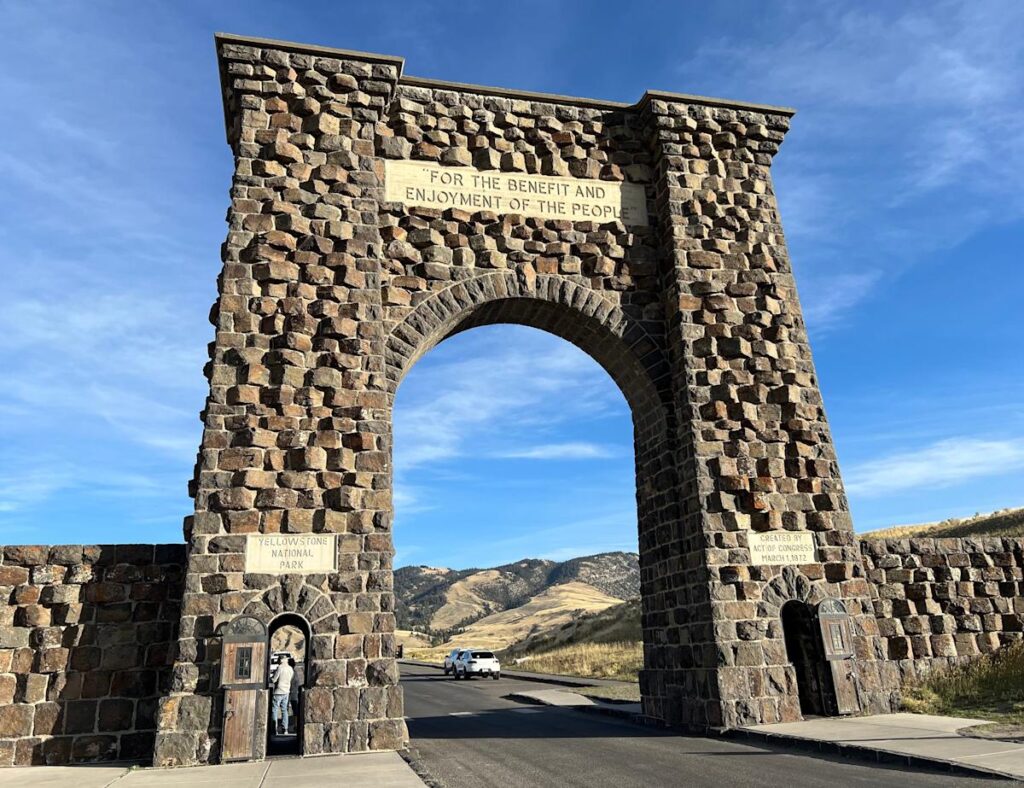National Park Week begins April 19 with an invitation to celebrate national parks in person, for free.
“Find a national park and come visit!” the annual event’s webpage encourages, pointing to the 433 “parks” across the National Park System, including national battlefields, monuments and seashores – not just places with National Park in their name like Great Smoky Mountains or Yosemite.
April 19 is one of five remaining free-entry dates this year. However, cost isn’t the only factor travelers are considering for their upcoming national park trips.
Prospective visitors, along with park proponents, are concerned about what the parks and experiences may look like after the sweeping layoffs across the National Park Service and the larger federal government in February.
Here’s what travelers planning national park trips should know:
A park ranger shares the history of Fort Sumter with visitors to Fort Sumter and Fort Moultrie National Historical Park near Charleston, South Carolina.
How to get a free national park pass
No special passes are needed for free park entry on April 19, the first day of National Park Week. Just show up.
At other times of year, certain groups are eligible for free admission:
◾U.S. military service members and their dependents, U.S. veterans and Gold Star families.
◾U.S. citizens or permanent residents with disabilities.
◾Fourth graders and family members traveling with them.
◾Volunteers who’ve spent at least 250 hours volunteering at federal recreation sites.
Not all parks charge entry fees, which go back to the park. Those top out at $35.
Should I go to national parks?

A sign tells visitors that restrooms at a Rocky Mountain National Park campground were being improved with money from entrance fees.
Yes.
“National Park Week is a great time to visit one of the country’s 430+ national parks,” an NPS spokesperson told USA TODAY by email. “It also is an opportune time to plan summer vacations or other excursions to national parks this year.”
Jason Rano, vice president, Government Affairs at the RV Industry Association, said if people stop visiting, “That’s money that’s not going back to the park and the Park Service … and for our customers and our industry, that’s a big concern. And it’s not just us. There are gateway communities that serve as important networks to these places that largely thrive or don’t on park visitation.”
Rano, who previously worked in Government Relations for the National Park Foundation, the official charitable partner of the National Park Service, added: “RVs need campgrounds. So even if they’re not using a public campground in a national park or national forest, they may be using a private RV park and campground in the gateway community and going to the cafes and going to the bookstores and things like that, so there’s a real potential economic hit to these largely rural gateway communities as well.”
Elizabeth Silkes, CEO of Grand Canyon Conservancy, the official nonprofit partner of Grand Canyon National Park, echoed that sentiment and encouraged visits.
“It’s a perfect time to visit national parks, to show your support for public lands in this country and our shared appreciation for the stories they share,” she said. “This is a moment to lean into what time spent in nature provides us, and it’s also a moment for a new kind of questioning when we are in these spaces: What is our role in protecting them? What can we do to better amplify their needs?”
Are national parks closing?
No.
Interior Secretary Doug Burgum issued a secretarial order on April 3 to ensure all national parks “remain open and accessible for the benefit and enjoyment of the American people and to ensure that the National Park Service will provide the best customer service experience for all visitors.”
“The National Park Service is focused on every visitor having meaningful opportunities to explore and connect with the incredible, iconic spaces of national parks,” the Park Service told USA TODAY.
The secretary’s order pledges to uphold the hours posted on the National Park Service’s website and review “any closures or reductions to operating hours, seasons, or any visitor services” beforehand at top levels.
The order also says: “The (interior) Department shall take action to ensure that NPS is properly staffed to support the operating hours and needs of each park unit.”
Budget cuts and bathrooms: An ongoing struggle at US national parks
Yellowstone National Park’s Roosevelt Arch is inscribed with “for the benefit and enjoyment of the people.”
What is happening to national park staff?
According to the nonprofit National Parks Conservation Association, all 1,000 of the probationary National Park Service employees terminated in February were allowed to be reinstated in March, after court orders determined their firings were illegal.
Additionally, despite a hiring freeze ordered by President Donald Trump on his first day in office, the National Park Service was approved in February to hire thousands of seasonal workers, as it does each year.
While some uncertainty remains about the stability of some positions, multiple park advocates and experts have told USA TODAY one thing is clear: the National Park Service was already understaffed before all this.
“For a long time actually, the park staff have been stretched quite thin,” Silkes said.
Story continues below.
To illustrate this point, Robert Manning, professor emeritus of Environment and Natural Resources at the University of Vermont, broke it down by numbers:
The National Park Service manages 433 units, spanning more than 85 million acres. Last year, they welcomed a record 331.8 million visitors, according to National Park Service data, all with roughly 20,000 employees.
For perspective, he compared that to Walt Disney World, which has roughly 80,000 cast members. “But the responsibilities of the National Park Service go well beyond an organization like Disney World,” he said.
Manning specialized in national parks and has written several books about them, most recently co-authoring “Conversations About Visiting and Managing the National Parks: Crowdsourcing America’s Best Idea.”
If visitors find fewer rangers available in a park or longer lines for help, Rano asks for patience.
“The folks that work at NPS, at Forest Service, at these other land management agencies are there because they care, and they want people to have the best experience possible,” he said. “If you’re headed out, we hope you have an awesome, awesome time, but be prepared for unknowns and have patience with the folks that you’re encountering because I know generally, to a person, they are doing their best.”
What do I need to know before going to a national park?
Signage warns visitors to stay away from an unsafe overlook along Grand Canyon National Park’s Bright Angel Trail.
Planning is always important, but park advocates say it’s especially important now.
◾The National Park Service’s website offers a wealth of tips to “plan like a park ranger,” as well as details on each park and any applicable reservation requirements. Visitors will also find up-to-date weather alerts and closure advisories.
◾Visitors can use the free National Park Service app to download park-specific information and maps before their visit, in case they lose cell reception in the parks.
◾Guidebooks are another resource visitors can carry along.
“It may be that visitors are a little bit more on their own this year, and that can be frightening a little bit, I think, to visitors,” Manning said. “It’s frightening to the welfare of the parks as well, because we need well-informed visitors when they get to the parks.”
He and others stressed the importance of personal safety and practicing Leave No Trace principles to help protect the parks.
Park rangers walk behind visitors at Arches National Park in Utah.
“I think this is a moment where we have realized the fragility, in many ways, of our public lands, and if we can lean into that feeling that many of us have had about how important it is to protect them, if that is infused in our visits and our planning for visits, perhaps that prompts a new way of looking at all we see in the parks,” Silkes said, encouraging visitors to also thank park rangers.
She said visitors who want to do more to show their support can donate to friends association groups and parks conservancies, volunteer and write to lawmakers.
“This country works best when everyone shares their perspective and what they feel most strongly about with their representatives,” she said. “It’s important to recognize how important these places are, not only in this moment, but in protecting them long into the future.”
This article originally appeared on USA TODAY: National parks still want you to visit. What to know before you go
Read the full article here


